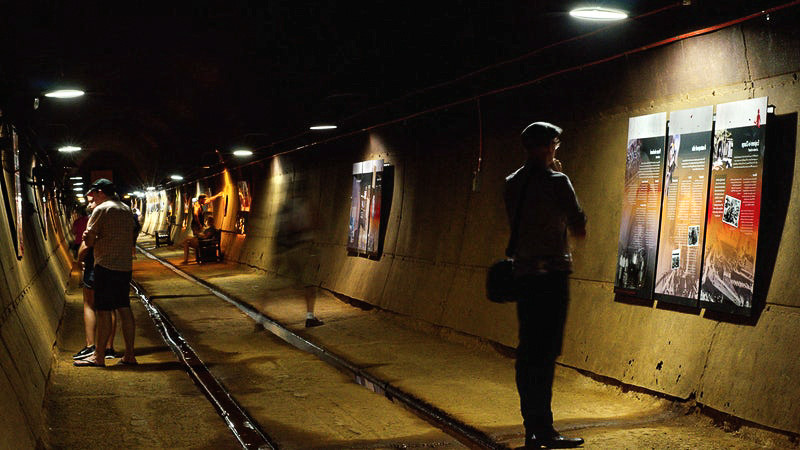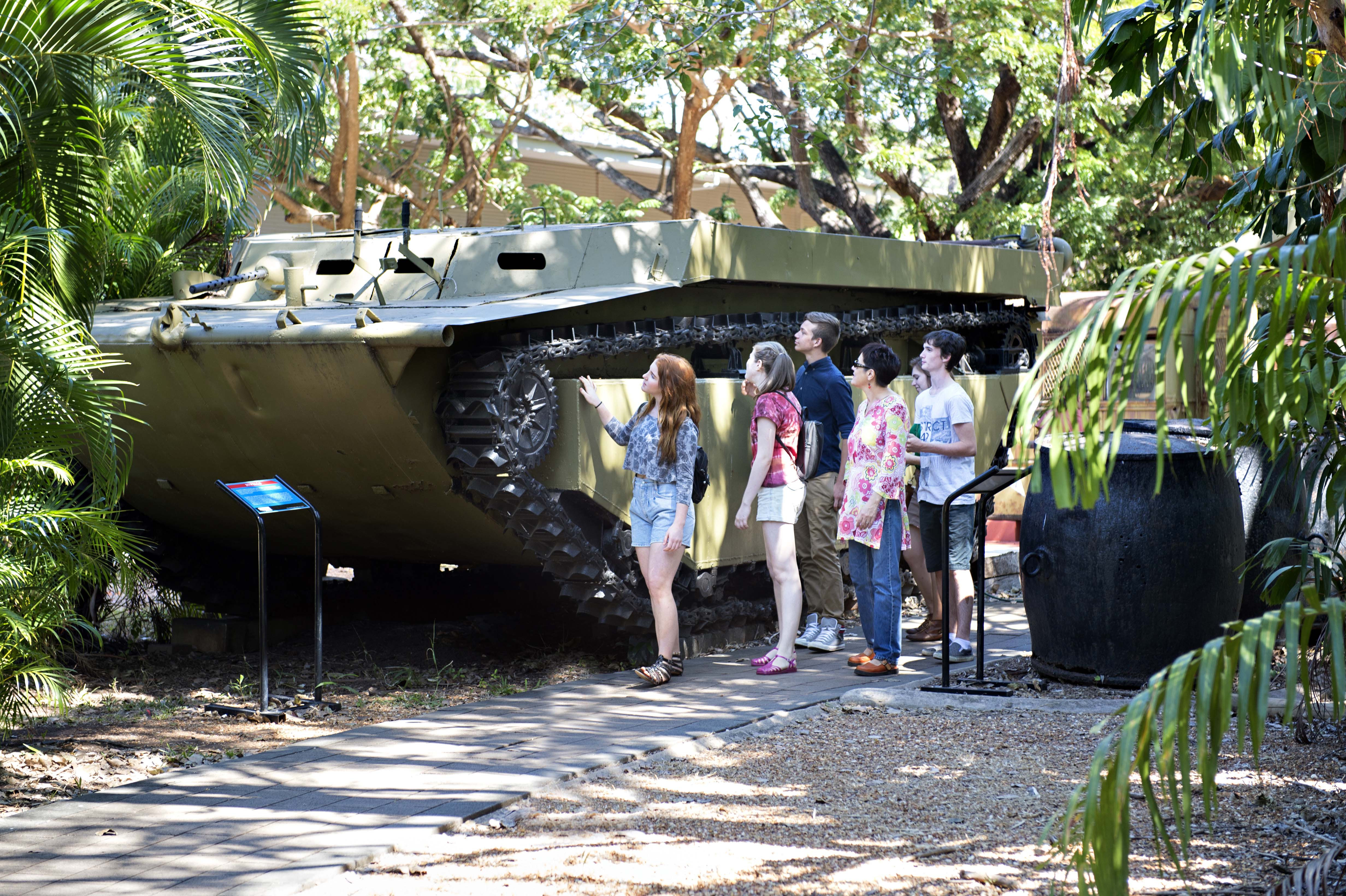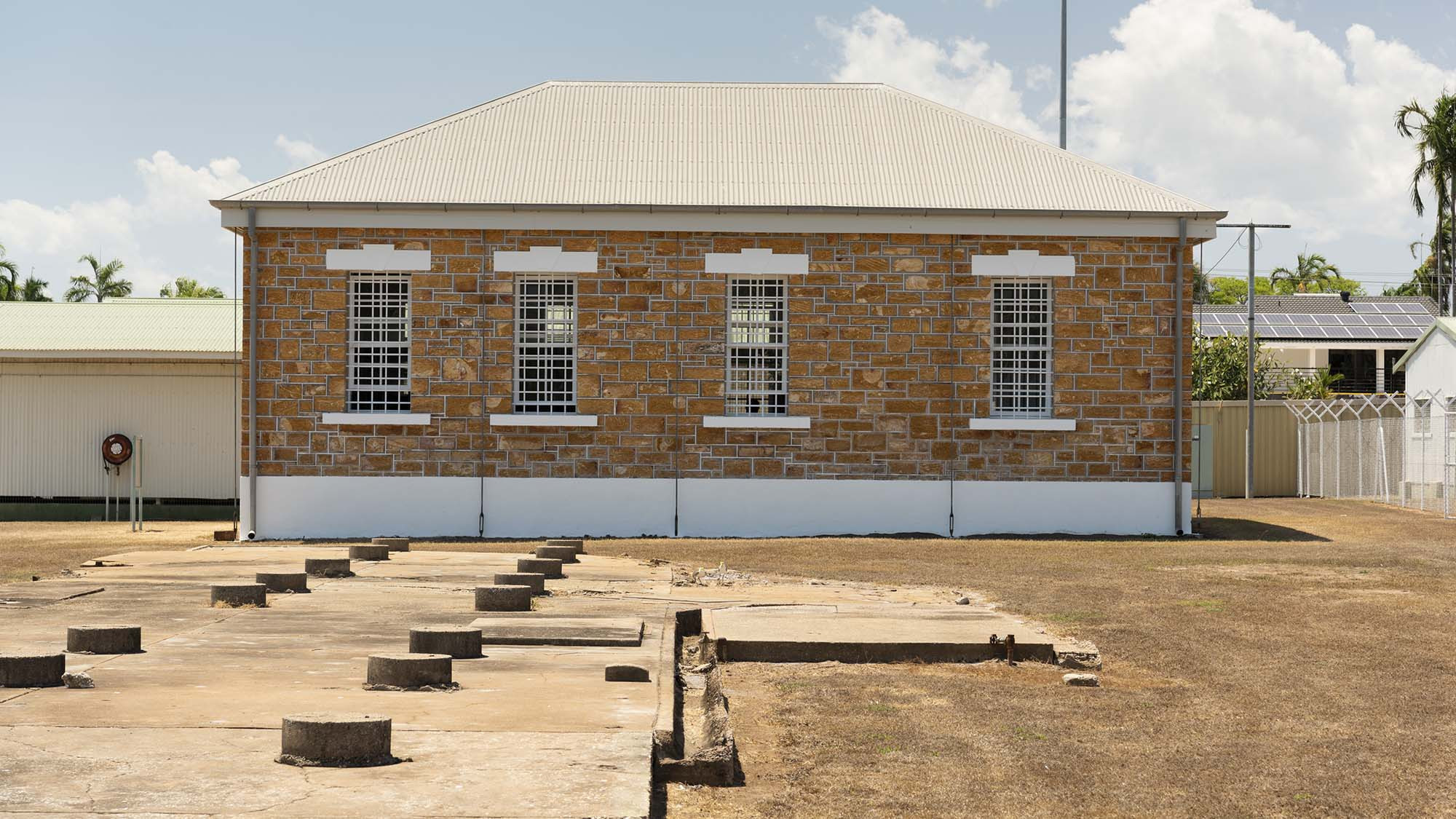Royal Flying Doctors Service Darwin Tourist Facility
The RFDS Darwin Tourist Facility details two key elements within the Northern Territory’s extensive history. Founded in 1939 by Reverend John Flynn, the RFDS has a rich history of heroic tales from the pilots, doctors, nurses and patients that can be experienced through life-size holograms, interactive storytelling, touch screen portals and even a decommissioned RFDS Pilatus PC 12 aircraft that you can venture into. Relive the iconic wartime experience through the immersive Virtual Reality of the Bombing of Darwin Harbour 1942 – a movie production whose magnitude has never been seen before in VR.

Image: Experiencing the immersive VR experience (credit Royal Flying Doctors Service)
Venturing through Darwin's WWII Oil Storage Tunnels
The World War II Oil Storage Tunnels located at the wharf were constructed during World War II by the Civil Construction Corps to protect Darwin's oil supplies from the Japanese. Today the tunnels, which are an engineering feat in themselves, house a collection of photographs of Allied wartime activity in the Top End. They were reopened in 1992 to commemorate the 50th Anniversary of the Bombing of Darwin in which 243 people lost their lives. These tunnels are easy to get to for those based in Darwin's centre as they're located beneath the cliffs of Darwin city and just a short walk from the city centre and the Esplanade. A knowledgeable gate keeper provides historical information relating to the concept of the tunnels and plenty of history books are for sale for those who want to learn more.

Image: The tunnels provide a different kind of historic experience (credit Oliver Thompson)
The Darwin Military Museum
At the Darwin Military Museum, you can walk through the lush gardens and discover the range of military vehicles and large artillery pieces as well as venturing beneath the gun deck to explore their vast collection of Vietnam War artefacts, weaponry and photographs. You’ll also find yourself captivated by the audio-visual journey known as the Defence of Darwin experience immerses you in the drama of the Japanese bombing as it unfolded, changing the face of the Darwin forever. Hear first-hand accounts from the men and women who survived the horror of that morning, as well as actual footage from the attack.

Image: Wandering the grounds of the Darwin Military Museum (credit Shaana McNaught & Tourism NT)
The Museum and Art Gallery of the Northern Territory
The MAGNT covers a range of topics, installations and activities including engaging interactive programs, maritime history, palaeontology, an ever-growing collection of Aboriginal Art, a vast natural science collection and a display regarding Cyclone Tracy’s devastating impact. It provides a whopping collection of over 1.2 million natural history specimens and over 30,000 items of world-class art and material culture.
As the MAGNT has curatorial expertise in palaeontology and marine taxonomy and systematics, which are underpinned by substantial collections of the Northern Territory, their exhibits are some of the best in Australia. The Natural Science Collections are a permanent and accessible record of the animals found within the Northern Territory and adjacent seas with specimens ranging from those found in the arid centre to the tropical north, from tiny insects to large whales.
The memory of the devastating Cyclone Tracy is still strong in the city, and there’s a breathtaking display of the cyclone’s impact at the Museum and Gallery, including the infamous ‘sound booth’. Having been rebuilt after the war, Darwin was devastated again in 1974 when Tracy struck, killing 71 people and wiping out most of the city’s buildings.
_1.jpg)
Image: History explored at the MAGNT (credit Shaana McNaught & Tourism NT)
Explore the Fannie Bay Gaol
Originally opened in September 1883, the historic and well-maintained Fannie Bay Gaol was Darwin's main prison for almost 100 years until 1979 and is a great example of a tropical gaol. You’ll visit the infirmary which added in 1887 and contains gallows used up until the last executions held in the Northern Territory in 1952. Both male and female prisoners were held here but in separate buildings from 1928 with the female block including a small garden designed to keep those incarcerated busy. Experience the watch tower, kitchen mess building, remand section, two maximum security wings and a "native section" for Aboriginal prisoners which were all added during the 1950s.

Image: The well maintained outside of Fannie Bay Gaol (credit the Museum and Art Gallery of the Northern Territory)





